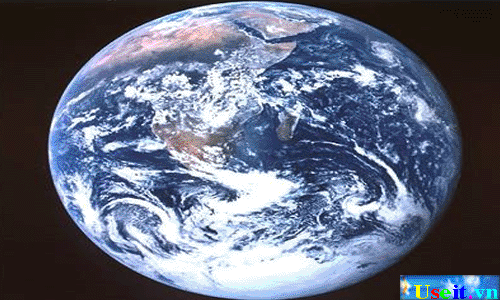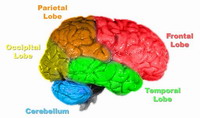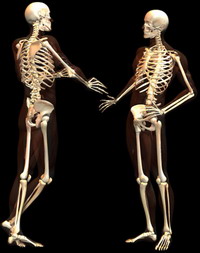Login form
Science
Solar System
 Solar System, the Sun and everything that orbits the Sun, including the planets and their satellites; the dwarf planets, asteroids, Kuiper Belt Objects, and comets; and interplanetary dust and gas. The term may also refer to a group of celestial bodies orbiting another star (see Extrasolar Planets). In this article, solar system refers to the system that includes Earth and the Sun.
Solar System, the Sun and everything that orbits the Sun, including the planets and their satellites; the dwarf planets, asteroids, Kuiper Belt Objects, and comets; and interplanetary dust and gas. The term may also refer to a group of celestial bodies orbiting another star (see Extrasolar Planets). In this article, solar system refers to the system that includes Earth and the Sun.
The dimensions of the solar system are specified in terms of the mean distance from Earth to the Sun, called the astronomical unit (AU). One AU is 150 million km (about 93 million mi).
Bacteria
 Peek into a clean room with no one in it. There are no pets in the room. There are no plants in the room. It looks like there is nothing alive in the room. The room, however, is swarming with life. Billions of tiny life forms called bacteria cover the tables and chairs and the floor. You can’t see them, but they stick to the windows, they cling to the ceiling, and they float through the air.
Peek into a clean room with no one in it. There are no pets in the room. There are no plants in the room. It looks like there is nothing alive in the room. The room, however, is swarming with life. Billions of tiny life forms called bacteria cover the tables and chairs and the floor. You can’t see them, but they stick to the windows, they cling to the ceiling, and they float through the air.
Suppose you looked at part of a chair in the room through a microscope. Microscopes magnify bacteria.You would see pale forms moving and bumping into each other like ghosts. These tiny life forms are bacteria. They live everywhere in the world. Billions of them even live inside of you!
Brain and Nervous System
 What kind of supercomputer can write stories, do math problems, draw pictures, play games, see through eyes, hear someone talking, talk back, and network with devices that make snacks in the microwave oven? Your brain and nervous system can do all these things. Do you think a computer will ever be as powerful as your brain?
What kind of supercomputer can write stories, do math problems, draw pictures, play games, see through eyes, hear someone talking, talk back, and network with devices that make snacks in the microwave oven? Your brain and nervous system can do all these things. Do you think a computer will ever be as powerful as your brain?
You think with your brain. Your brain also sends signals through a network called your nervous system. It tells your legs to walk and run. It tells your hands and arms to put popcorn in the microwave. You don’t even have to think about many of the things your brain does. Your brain tells your heart to beat. It tells your lungs to breathe in and out, even when you are sleeping.
Bones and Skeleton
 Squeeze your arm. The outside of your arm is soft, but there is a hard part inside. The hard part is a bone. There are bones in your arms and in your legs. Bones go up the middle of your back. They go around your chest. All of your bones together make up your skeleton. Your skeleton holds your body up. It gives your body its shape. Bones do many other important jobs in your body.
Squeeze your arm. The outside of your arm is soft, but there is a hard part inside. The hard part is a bone. There are bones in your arms and in your legs. Bones go up the middle of your back. They go around your chest. All of your bones together make up your skeleton. Your skeleton holds your body up. It gives your body its shape. Bones do many other important jobs in your body.
WHAT DO BONES DO?
Many bones protect the soft parts inside your body. Skull bones around your head protect your brain. Rib bones make a cage around your chest. Your rib cage protects your lungs and heart.
Cancer
 Cancer—it’s scary word, and a scary disease. Cancer kills a lot of people all over the world. Only heart disease kills more Americans.
Cancer—it’s scary word, and a scary disease. Cancer kills a lot of people all over the world. Only heart disease kills more Americans.
But there’s good news too. Millions of people who have had cancer are still alive. Doctors have learned a great deal about treating and preventing cancer.
WHAT IS CANCER?
Cancer is not a single disease. It includes more than 100 different diseases. They may affect any part of the body. But they have one thing in common. They are all caused by cells that are out of control.
